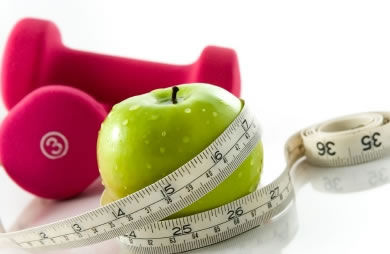
A common concern for women exercising during pregnancy is how hard to work. You've probably heard you should keep your heart rate at 140 beats per minute (bpm) maximum to prevent any undue stress to the baby. But in 1994, the American College of Obstetrics and Gynecology (ACOG) lifted the restriction on intensity and duration for exercise because there was no evidence that a heart rate greater than 140 beats per minute caused harmful effects for the baby.
This doesn't mean of course that you can exercise with reckless abandon, but it's good news to those who hit 140 bpm just walking up stairs. Many experts now believe it's best to follow the philosophy of "rate of perceived exertion," which basically involves exercising at a level that allows you to carry on a conversation. This level is different for every woman, based on your level of fitness before pregnancy, your age, and your resting heart rate.
During pregnancy your resting heart rate increases, so using 140 bpm as a baseline may not be the best way to measure your level of maximum intensity. Other changes during pregnancy that affect your fitness level are a possible decrease in blood pressure, along with an increased ability for the body to transport oxygen to the fetus as well as the muscles you're exercising. In fact, the cardiorespiratory changes in some women can allow for increased exercise performance after delivery-- just another reason why moderate exercise done throughout pregnancy is beneficial.
You should always check with your doctor before embarking on an exercise routine. But if he or she gives you the 140 bpm limit, be prepared to ask for an explanation-- and perhaps diplomatically mention that the ACOG has lifted that restriction. The best indicator of how hard you should work is to be competent in assessing your exercise intensity. You don't want to become breathless or exhausted, and you should monitor your heart rate to see where you are during exercise.
You should also be aware that as your pregnancy progresses you'll reach your maximum exertion level more quickly. Pregnancy is not the time to try to drastically improve your fitness performance. But you can commit to creating a healthy lifestyle and providing your baby with the best environment possible as it grows.
Experts now suggest using the Rate of Perceived Exertion (RPE) Scale, also called the Modified Borg Scale. This scale ranges from 1 to 10, and is a self-assessment. When pregnant, you should exercise between level 4 (Somewhat hard) and level 6 (Hard).
Continued ›
| 






Member Comments